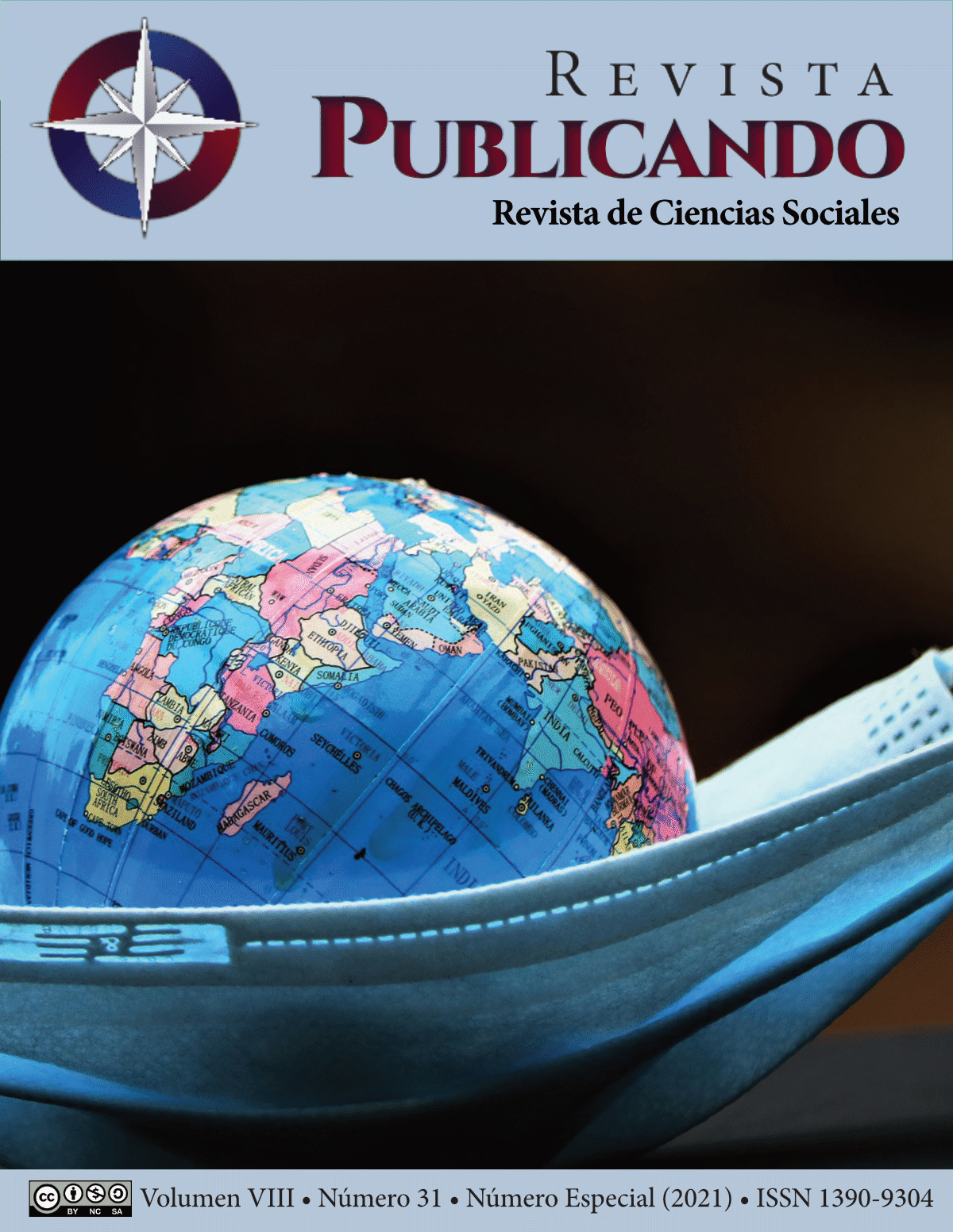Abstract
A distribution channel consists of a set of people and companies involved in the transfer of rights of a product, it always includes the producer and the final customer of the product in its present form, as well as any intermediary, such as retailers and wholesalers, its importance lies in the benefit that consumers receive in terms of saving time to meet needs with obtaining the product, however it has been observed that in the Ayacucho parish, the commercialization of lemon is done using several links in the distribution channel hindering the obtaining of higher income to producers. For this reason, in this study it was proposed to determine the distribution channels that contribute to the increase of lemon sales in the parish, for which exploratory, field and documentary research was used, with the techniques of interviewing the President of the Parish GAD and a survey of 49 producers, establishing the distribution channel they use, and recommending the implementation of strategic alliances that contribute to promote the export of their product for the revitalization of commercial activity.
References
Española, D. d. (s.f.). https://dle.rae.es. Obtenido de https://dle.rae.es/srv/fetch?id=bXt7EYJ
Espejo Martínez, A., & Ramos Soto, A. L. (2017). Investigación y Desarrollo Económico Administrativo. México: TECCIS A.C.
Figueroa, A. M. (2015). Situación actual de los citricultores del Valle del Río Valdivia, Santa elena; bajo el enfoque del marco de capitales. Santa Elena: Universidad Estatal Península de Santa Elena.
Fischer, L., & Espejo, J. (2011). Mercadotecnia. México: McGraw Hill.
FRED R , D. (2003). Concepto de Administracción Estratégica. México: PEARSON EDUCACIÓN.
Freire Rubio, M. T., & Blanco Jimenez , F. J. (2006). Prácticas y Conceptos Básicos de Microenomía. Madrid: ESIC.
GAD Parroquial Ayacucho. (2015 - 2019). Plan de Desarrollo Territorial Ayacucho.
Garcia Bobadilla, L. M. (2009). + Ventas. Madrid: ESIC.
Garcia Duque, B. K. (2014). UCSG. Obtenido de http://repositorio.ucsg.edu.ec/bitstream/3317/2710/1/T-UCSG-PRE-TEC-EADR-13.pdf
Geilfus, F. (1994). El Arbol al Servicio del Agricultor . Costa Rica: CATIE.
Hernández Garnica, C., & Olvera Hernandez, J. C. (04 de 2010). ACACIA. Obtenido de http://acacia.org.mx/busqueda/pdf/IMPACTO_DE_LA_TECNOLOG__A_REGIONAL.pdf
INFOCAMPO. (16 de 07 de 2017). INFOCAMPO. Obtenido de https://www.infocampo.com.ar/argentina-es-el-primer-productor-mundial-de-limones/
Instituto Nacional de Estadísticas y Censos. Encuesta de Superficie y Producción Agropecuaria Continua. (2019). Ecuador en cifras. Obtenido de Información Estadísitica: https://www.ecuadorencifras.gob.ec/encuesta-de-superficie-y-produccion-agropecuaria-continua-bbd/
Jerez, M. T. (2016). Canales de distribución en el marketing MIX.
Jimenez, S. M. (2012). Distribución Comercial Aplicada. Madrid, España: ESIC.
Karamelikli, H. (09 de 03 de 2016). TRT Español. Obtenido de https://www.trt.net.tr/espanol/programas/2016/03/09/por-que-es-tan-importante-el-sector-agricola-para-la-economia-de-pais-447371
Kennedy, G. D. (2014). Repositorio UCSG. Obtenido de http://repositorio.ucsg.edu.ec/bitstream/3317/2710/1/T-UCSG-PRE-TEC-EADR-13.pdf
Kossen, S. (1992). La venta de creativa. Madrid: Ediciones Diaz de Santos S&A.
Lamb, C., Hair, J., & McDaniel, C. (2011). Marketing. México: Cengage Learning.
León Alvéstegui, G., Valdéz Rodríguez, H., & Vásquez Mamani, V. H. (2003). Mercado KANTUTA ¿Un mercado campesino? La Paz : Bolsillo.
Leon, J. (1987). Botánica de los Cultivos Tropicales . San Jose, Costa Rica : IICA.
Ley Organica Popular y Solidaria. (23 de 10 de 2018). SEPS. Obtenido de http://www.seps.gob.ec/documents/20181/25522/LEY%20ORGANICA%20DE%20ECONOMIA%20POPULAR%20Y%20SOLIDARIA%20actualizada%20noviembre%202018.pdf/66b23eef-8b87-4e3a-b0ba-194c2017e69a
Little , E., Wadsworth, F., & Marrero, J. (1977). Árboles comunes de Puerto Rico y las Islas Virgenes. Puerto Rico: Universidad de Puerto Rico.
Ministerio de Agricultura y Desarrollo Rural. (2005). La competitividad de las cadenas agroproductivas en Colombia 1991- 2004. Bogota: IICA.
Opportimes. (05 de 05 de 2020). Opportimes. Obtenido de Los diez mayores exportadores de limones del mundo: https://www.opportimes.com/los-10-mayores-exportadores-de-limones/
Pérez Porto, J., & Merino, M. (2012). Definición.de. Obtenido de https://definicion.de/parroquia/
Perez, A. V. (2011). Técnica de venta. Antequera: Innovación y Cualificación.
Pino Mantilla, C., Soria Altamirano, C., & Espinel Martínez, R. (2009). Estudio de prefactibilidad para la producción del limón tahiti de la Península de Santa Elena. Tesis de grado, Guayaquil. Obtenido de https://www.dspace.espol.edu.ec/bistream/123456789/471/1/923.pdf
Pino Peralta, S., Apolo Loayza, A., Sisalema Morejon, L., & Aguilar , H. R. (2018). Aporte del sector agropecuario a la economía de Ecuador. Revista ESPACIOS. Obtenido de https://www.revistaespacios.com/a18v39n32/a18v39n32p07.pdf
Ruiz Gonzalez , A. E., & Wang Quezada, L. A. (2015). Repositorio UCSG. Obtenido de http://repositorio.ucsg.edu.ec/bitstream/3317/4370/1/T-UCSG-PRE-ESP-CFI-176.pdf
Santistevan Mendez, M. S. (2016). Repositorio Molina. Obtenido de http://repositorio.lamolina.edu.pe/bitstream/handle/UNALM/2740/F01-S3558-T.pdf?sequence=1&isAllowed=y
Statista. (01 de 2021). Statista. Obtenido de Ranking de los mayores países productores de limones y limas a nivel mundial en 2019.: https://es.statista.com/estadisticas/613493/principales-paises-productores-de-limon-en-el-mundo/#statisticContainer
Staton, W., Etzel, M., & Walker , B. (2007). Fundamentos de Marketing 14th Edicion. Mexico: McGraw-Hill Interamericana.
Valarezo Cely, O. (19 de 04 de 2019). El Diario. Obtenido de http://www.eldiario.ec/noticias-manabi-ecuador/500179-agroindustria-del-limon/
Vásquez, L., & Vásquez, P. (2014). Producción de limón Tahiti (Citrus Latifolia Tan.) con la aplicación de humus de lombriz. Revista científica agrociencias Amazonía, 21(1), 1-6.
Velazquez Velazquez, E. (2012). Canales de Distribución y Logística. México: Red Tercer Milenio.

This work is licensed under a Creative Commons Attribution-NonCommercial-ShareAlike 4.0 International License.
Copyright (c) 2021 Ruth Sumba-Bustamante, María Vinueza-Ramirez, Thalia Pibaque-Molina






